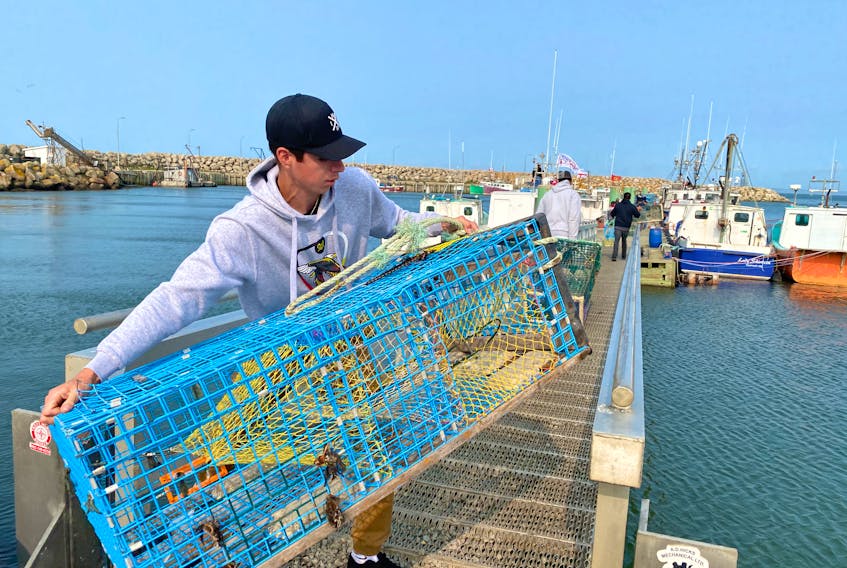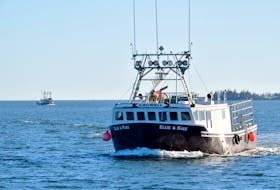In a socially distanced ceremony 341 kilometres from the Saulnierville Wharf, the chief of a small Antigonish County First Nation was sworn in to lead the Mi’kmaw people of Nova Scotia and Newfoundland and Labrador on Thursday morning.
As dozens of non-native fishing boats waited for the dozens of First Nations boats inside the wharf, Paqtn’kek Chief Paul Prosper took the podium at the Millbrook Culture and Heritage Centre.
He spoke of his people’s connection to the land and water and principles of stewardship handed down to them from the creator.
“What does (this) mean to a non-Mi’kmaq fisher who is worried about his or her livelihood? A person who is worried about the impact of a moderate livelihood fishery on fish stocks and their way of life?” said Prosper. “For me it means several things. It means our Mik’maq fishers are practising something that we have done since the beginning of time. It means that these practices have been conducted in a sustainable manner through the original instructions given to us by the creator. In other words, it is our birthright.
"Thirdly, these rights have been recognized and affirmed by the highest law and court in this country.”
Whether the fishing families of the communities surrounding Saint Mary’s Bay, where a lobster licence goes for about $800,000, were following the livestreamed swearing-in ceremony or took solace from Prosper’s words is hard to determine.
An hour later Sipekne’katik Chief Mike Sack issued fishing licences to Mi’kmaw-owned boats.
Sack told reporters that his community didn’t have a problem with non-native fishermen, but rather with the federal government that “are not upholding our rights.”
The leaders of the commercial fishermen have sounded a similar refrain – repeatedly stating their issue is with Fisheries and Oceans Canada for not negotiating a solution over the 21 years since the Supreme Court of Canada upheld the Mi’kmaw’s right to make a moderate livelihood off natural resources in its landmark Marshall decision.
“Our issue is not with Indigenous people, it is with the government,” Colin Sproule, president of the Bay of Fundy Inshore Fishermen’s Association told The Chronicle Herald on Tuesday.
“(Fisheries Minister Bernadette Jordan has a) fiduciary duty to protect the fishery for all communities, Indigenous and non-Indigenous. A duty she has completely abdicated for the sake of politics."
“I am in communication with First Nations leadership to find a collaborative path back to the negotiation table,” reads a written statement released by Jordan Wednesday evening.
“Implementing the Marshall decision is critical to the work of reconciliation and it is a priority of our government. Until an agreement is reached with DFO, there cannot be a commercial fishery outside the commercial season. A sound management framework is necessary for the management and conservation of fish stocks."
But a commercial fishery has started on St. Mary’s Bay outside of the commercial season.
Another is set to begin on Oct. 1 in St. Peter’s Bay when Cape Breton’s Potlotek First nation plans to take to the water.
Both Potlotek and Sipekne’katik have or are developing their own management plans.
The latter will be selling its catch from its community truck house.
“As in any new entrance into a fishery, some fishers may harvest more than a moderate livelihood, while others may harvest less,” reads the Sipekne’katik release announcing the issuance of lobster licences.
“This is intentional. The effect of this phased approach to our fishery on a commercial lobster industry that lands 60-million pounds of catch is insignificant."









